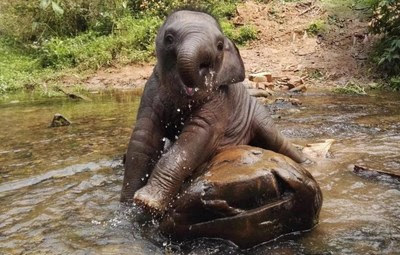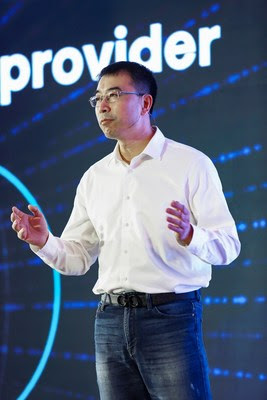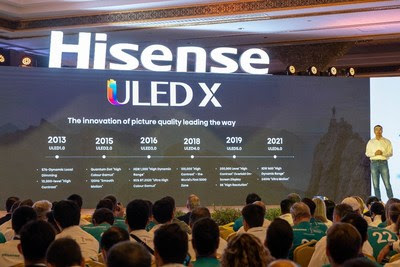China’s annual Central Economic Work Conference, held in Beijing last week, demanded making economic stability a top priority and pursuing steady progress for 2023.
And analysts believe that China’s economy will rebound and continue to be a reliable and important driving force of the global economy in 2023.
Many local governments arranged charter planes to send business delegations to meet overseas customers, stimulating enterprises to revive business.
Zhang Chunlong, a researcher at the Jiangsu Provincial Academy of Social Sciences, emphasized that regaining order is important, but what is more important is recovering economic confidence and vitality.
“We need to accelerate domestic and international economic circulation and development.”
Keeping enterprises operational
In the past three years, the Chinese governments at all levels adopted a series of policies to keep enterprises operational amid recurrent COVID-19 waves.
To protect local chipmakers in eastern metropolis Shanghai, the municipal government allowed them to operate under a “closed-loop” system.
Chip manufacturers there ensured normal outputs despite a COVID-19 outbreak that started on March 28, when the city began to witness a rising number of Omicron infections.
Hua Hong Semiconductor Limited, China’s second-largest chip producer, has accommodated more than 6,000 workers spread across five factories in Shanghai since March 27.
Wang Lijing, a Hua Hong worker, told China Media Group (CMG) in April that he’s been staying in the factory for the past two weeks.
A Shanghai shipyard also resumed production on April 23 and delivered the world’s largest Very Large Ethane Carrier (VLEC) on May 16.
For epidemic prevention and control, the shipyard set independent ventilation systems requiring on-board staff who tested positive for the coronavirus or confirmed as cases of COVID-19 infections to be under quarantine immediately to curb possible further spread of the virus.
Zhang Jian, deputy general-manager of the Jiangnan Shipyard, told CMG, “In the first stage, we resumed the normal delivery process at the wharf, and we plan to reopen all shipyard production lines by the end of May.”
With effective COVID-19 measures, China’s BYD dethroned Elon Musk’s Tesla as the world’s biggest electric vehicle (EV) producer by sales in the first half of 2022 with 641,000 sold vehicles.
Jeff Chung, an auto analyst with Citigroup, termed BYD’s sales growth “impressive.”
Chinese enterprises ‘go abroad’
As China further eased COVID-19 restrictions in December, cities dispatched delegations to overseas markets for the first time in three years, to promote trade and secure deals.
East China’s Zhejiang Province took the lead in recovering foreign trade and organized a group of around 100 delegates representing 50 enterprises to join in the 36th Asia Fashion Fair in Tokyo, Japan.
“A meeting in person is better than a thousand emails,” Li Lin, deputy director of Foreign Trade Development Office, Zhejiang Provincial Department of Commerce, told CMG.
At the same time, cities in east China’s Jiangsu Province, including Suzhou and Wuxi, southwest China’s Sichuan Province and south China’s Guangdong Province also sent delegations abroad for new opportunities.
“Going abroad is a must,” said Wang Yuanpei, general manager of Wuxi Jiejin Precision Machinery Co., Ltd.
“International markets have experienced tremendous changes over the past three years and we are eager to communicate with our clients face-to-face to consolidate our relations.”
Foreign companies’ confidence in China
Foreign enterprises say they still find China an attractive destination for investment despite of COVID-19.
The 20th National Congress of the Communist Party of China has further boosted foreign enterprises’ confidence in the market, according to a survey released on October 27 by the China Council for the Promotion of International Trade (CCPIT).
Among the over 500 foreign enterprises surveyed, 96.7 percent affirmed China’s development achievements over the past decade and 96.9 percent expressed stronger confidence in the Chinese market.
In Q1 of this year, roughly 90 percent of foreign-funded enterprises were satisfied with China’s policies concerning market access, promotion of market competition, access to business premises and financial services.
Also in 2022, China’s leading automaker First Automotive Works and German automaker Audi launched a project to produce pure electric vehicles in the northeast Chinese city of Changchun, with a total investment of more than 30 billion yuan ($4.7 billion).
Dr. Juergen Unser, president of Audi China, told CGTN that “the decision is very important to go with our trusted partner FAW into the Jilin Province.”
“It clearly demonstrates our continuous commitment to the e-transformation of the Chinese automotive industry.”
https://news.cgtn.com/news/2022-12-20/New-Approaches-How-China-stimulates-enterprises-to-revive-business-1fUEI1oqPM4/index.html




